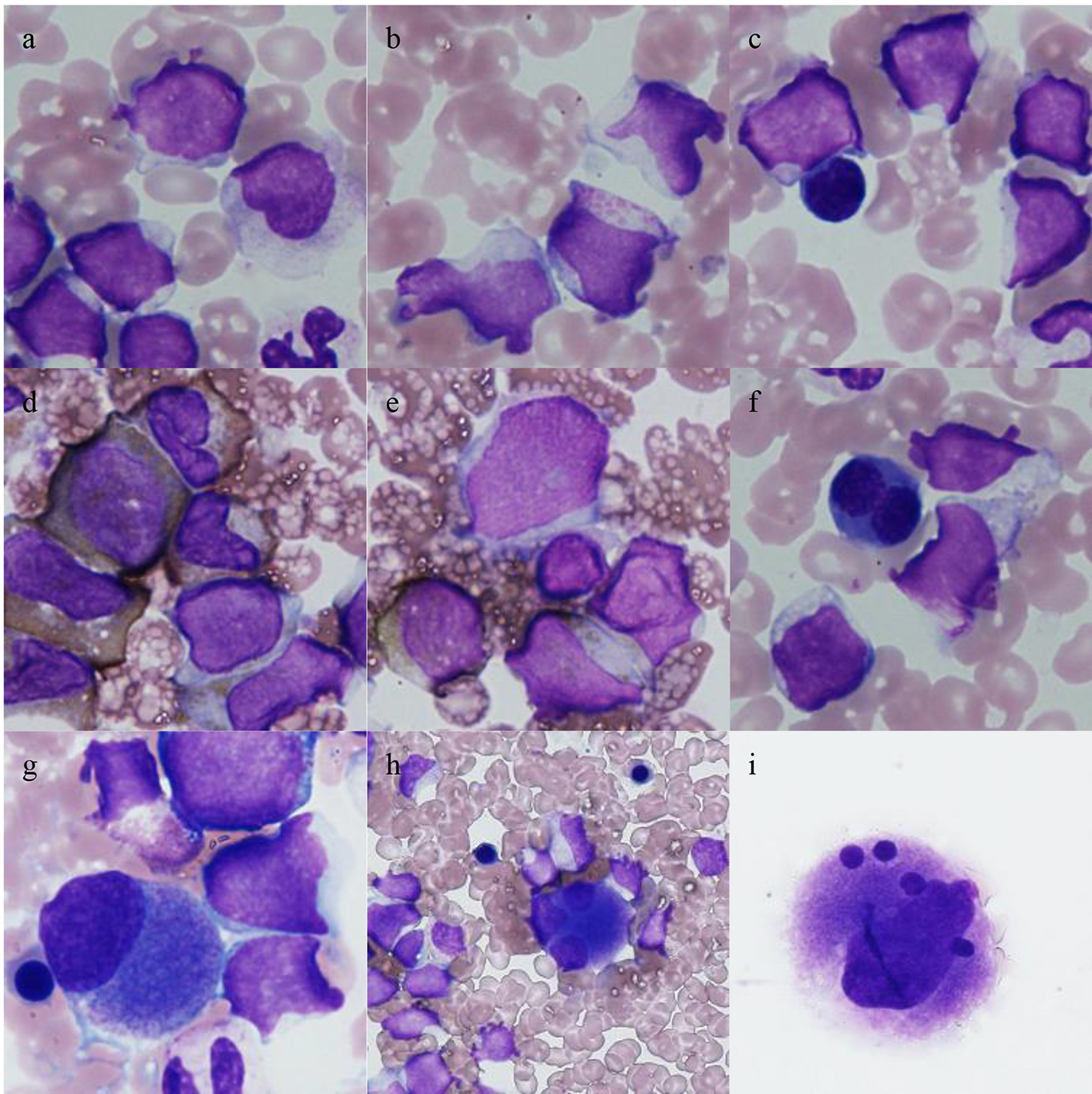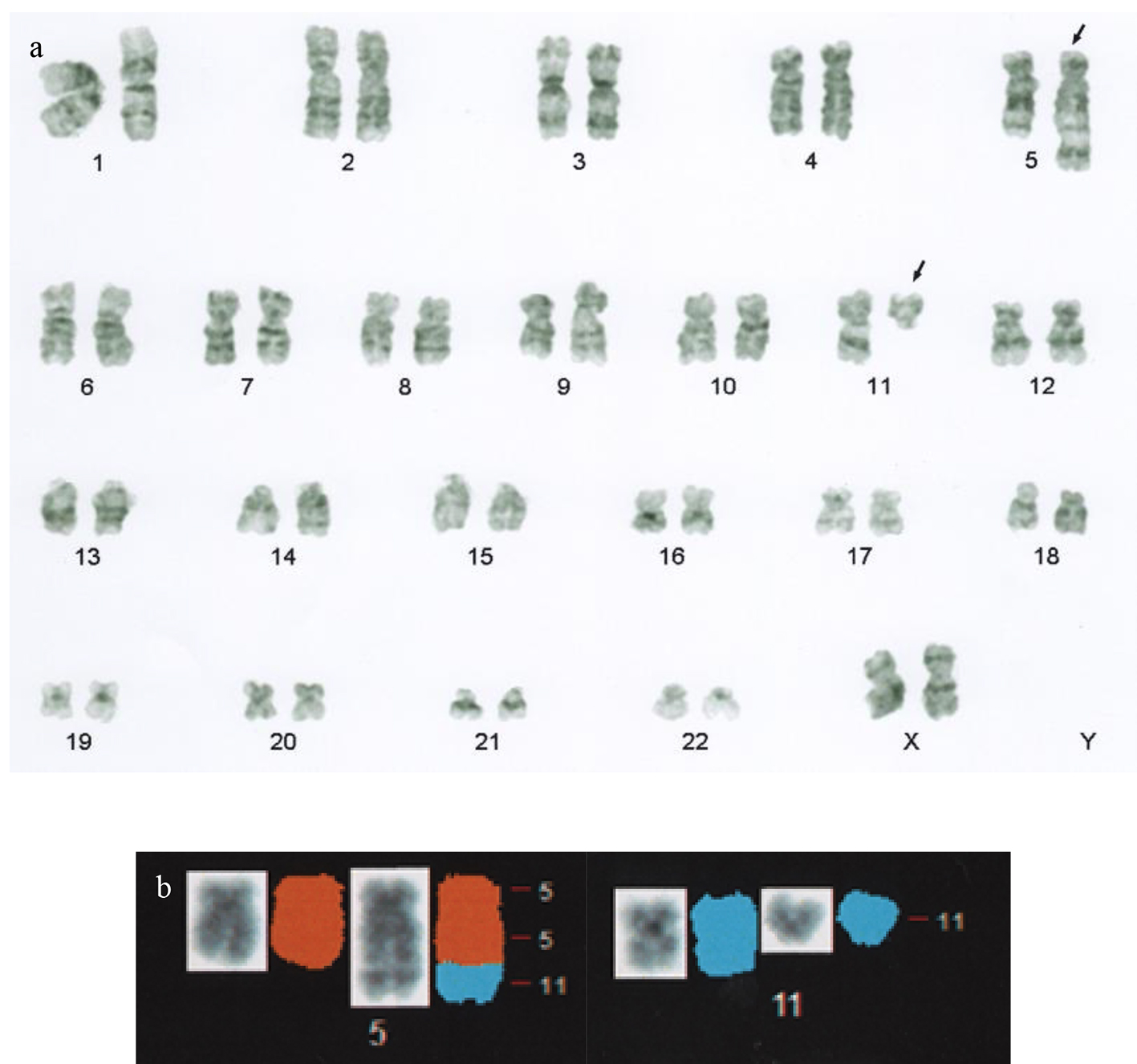
Figure 1. Bone marrow cells seen at the diagnosis of leukemia. Low frequencies of dyserythropoiesis and dysmegakaryopoiesis were observed. (a-c) Leukemic cells (May-Giemsa staining); abundant granules were occasionally observed (b); (d, e) blasts that were positively and negatively stained for myeloperoxidase, respectively; (f) a binuclear erythroblast (May-Giemsa staining); (g-i) megakaryocytes (May-Giemsa staining); (g) a small mononuclear megakaryocyte; (h) a trinuclear megakaryocyte; (i) a megakaryocyte containing multiple separate, round nuclei.
